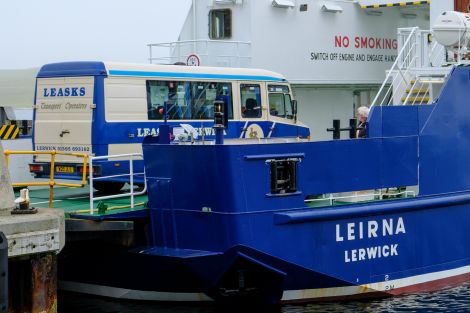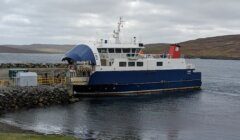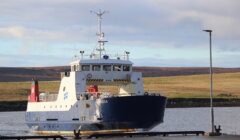Transport / Business cases on future of inter-island transport could cost up to £700k
COUNCILLORS will be asked next week to give the green light to business cases costing up to £700,000 which would explore the future of Shetland’s inter-island transport network – with fixed links set to be part of the consideration.
The idea behind the proposed strategic and outline business cases is to inform future decision-making on Shetland’s inter-island transport network.
They would also provide the basis for engagement with both the Scottish and UK governments on establishing their role in addressing transport needs within Shetland.
The total cost of this significant piece of work has been estimated at up to £700,000.
External funding is being explored, but as it cannot be guaranteed there is a proposal to dip into Crown Estate income the council receives every year from assets out to 12 miles at sea around the isles.
As of 1 March around £1 million of Crown Estate money – which community groups in Shetland can bid for – remains unallocated.
A long-awaited report on developing an inter-island network strategy will come in front of councillors on Tuesday and Wednesday.
It comes against a backdrop of Shetland Islands Council’s ferry fleet continuing to age – as well as a desire to see fixed links, like tunnels, as a long-term solution on the busiest routes.
The major stumbling block for tunnels has always been where the funding would come from.
The report to councillors says a “very broad estimate” of fixed links for Bluemull Sound (including Yell to Fetlar), Yell Sound, Whalsay and Bressay stands at more than £500 million at 2022 prices.
Meanwhile if the entire network was to remain ferry-only then around £120 million to £150 million of capital investment would be needed over the next ten to 15 years.
A lack of investment over the last 20 or so years has led to an ageing ferry fleet, which has an impact on reliability.
Become a member of Shetland News
The Hendra on the Whalsay service, for example, entered service in 1982 and is regarded as a priority for replacement, but a fixed link to the isle has long been suggested.
The last time new vessels entered service in Shetland was in 2004 with the Yell Sound boats Dagalien and Daggri.
The impact on ferry network reliance has affected businesses and island communities, the report says – resulting in concerns it is leading to depopulation in certain areas.
The council does not have any funded ferry replacements set in stone, nor does it have any government commitment to pay for fixed links.
However there was an apparent softening in the government’s stance regarding ferry replacements following transport minister Jenny Gilruth’s visit to Shetland last year.
Speaking earlier this month SIC chief executive Maggie Sandison explained the council has had a number of years of conversations about the need to replace vessels, and the position has always been “they’re your ferries, you’ve got to sort all of this out”.
But she said transport minister Gilruth understood the council’s position and that Shetland should not be treated differently to other island communities such as the Western Isles.
Last month it was confirmed that the Scottish Government would again stick to its pledge of providing island councils with ‘fair ferry funding’ to cover the deficit in running inter-island services, but for Shetland nothing has been committed regarding vessel replacements.
The ask from the SIC when it came to revenue funding in 2023/24 was £23 million, but there is uncertainty over future requests as there is no established agreement in place with the government.
To address the “issues and risks” with the current state of the inter-island network, the report to councillors said it is necessary to develop “thorough and comprehensive” business cases on the way forward.
“An evidence based and thorough strategic business case with supporting business cases is fundamental to ensuring positive outcomes for individual islands and Shetland as a whole,” it added.
If the plans are approved, a strategic business case could be worked on from April, with the process potentially taking a year.
An outline business case when then follow in April 2024, possibly running through to December that year. That could include a fixed links ‘“route map”.
The report to councillors added: “At the conclusion of this process there will be an agreed investment programme with a robust analytical underpinning.”
Meanwhile Sandison suggested the design process around tunnels in Shetland – partly because they would be different to others already in place in the UK – would take a significant amount of time.
“We’ve got ferries that are old already, and we might need to buy some vessels as an interim solution that then can be used somewhere else,” she said.
The council chief added that “if somebody was able to fund a ferry but not a tunnel, we wouldn’t turn down something that met the needs of the community today, even if we had the long-term vision for something else”.
The SIC should also be open to different models of how to get ferries in, Sandison added – such as leasing them.
Become a member of Shetland News
Shetland News is asking its readers to consider paying for membership to get additional perks:
- Removal of third-party ads;
- Bookmark posts to read later;
- Exclusive curated weekly newsletter;
- Hide membership messages;
- Comments open for discussion.
If you appreciate what we do and feel strongly about impartial local journalism, then please become a member of Shetland News by either making a single payment, or setting up a monthly, quarterly or yearly subscription.









































































